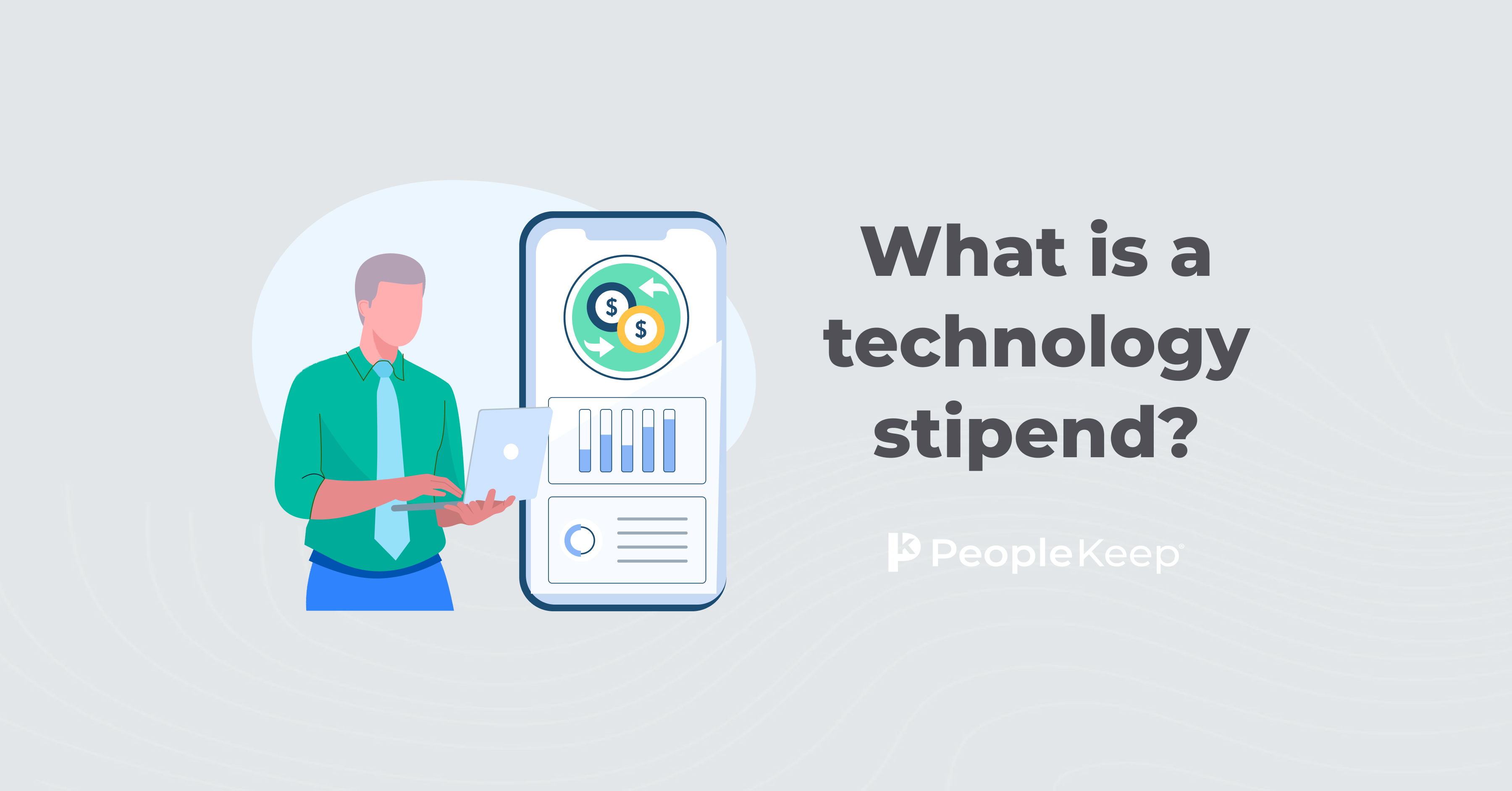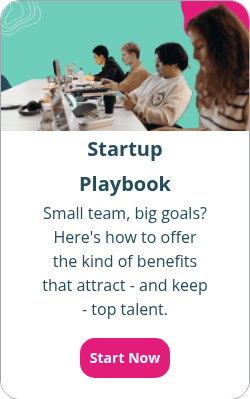HR tech vs. work tech
By Holly Bengfort on May 15, 2025 at 7:15 AM
In today's digital age, technology is an integral part of our professional lives. From streamlining human resources (HR) processes to enhancing employee productivity, technology has revolutionized the way we work. On any given day, employers and their teams may find themselves interacting with one of two distinct categories of technology: HR tech and work tech.
In this article, we'll explore the differences and similarities between them.
In this blog post, you'll learn:
- How technology tools help HR professionals make data-driven decisions that benefit their organization.
- How work tech improves the employee experience at a company.
- The wide range of HR tech and work tech that's available.
What is HR tech?
HR tech refers to technology solutions that automate and optimize human resource management processes. HR tech not only saves time and resources but also provides real-time insights into workforce trends through data analysis.
The core functions of HR tech include:
- Automated administrative tasks: HR tech automates routine tasks such as payroll processing, attendance tracking, compliance management, and benefits administration. This frees up HR professionals to focus on strategic initiatives that drive better business outcomes.
- Recruitment and talent acquisition: Recruitment platforms that use artificial intelligence (AI) can facilitate efficient candidate screening and employee onboarding. These AI-powered tools can help businesses attract top talent.
- Employee self-service: HR tech helps employees access and manage their information, from updating personal details to requesting time off, reducing the administrative burden.
- Performance management: Digital platforms provide data-driven insights into employee performance. This makes it easier for managers to identify strengths, areas for improvement, and pathways for employee development. This helps you guide your employees through every stage of their employee lifecycle.
- Data analytics: Advanced analytics offer a wealth of data that HR professionals can leverage to make strategic decisions regarding workforce planning, diversity initiatives, and employee satisfaction.
Some popular HR tech tools and software include:
- Applicant tracking systems (ATS): ATS companies like BambooHR, BreezyHR, and Rippling offer a wide range of functions. They can handle everything from the recruitment process to the hiring process. This includes posting job openings, accepting applications, and sending interview invitations to potential candidates.
- Human capital management (HCM): HCM systems, such as ADP and UKG Pro, often include features such as workforce planning, talent management, and succession planning.
- Performance management systems: Software like Namely, Trakstar, and Workday tracks and measures employee performance in a consistent manner.
- Human resource information (HRIS): Systems like Paycor, Monday.com, and Rippling automate core HR functions and administrative tasks.
- Learning management systems (LMS): Organizations use LMS software, such as TalentLMS, Absorb, and Moodle, to deliver employee training programs to their workforce.
- Employee payroll software: Tools like Paychex, Paycor, and Gusto manage, organize, and automate employee payments.
- Employee engagement platforms: Tools such as Leapsome and Bonusly help to increase employee job satisfaction and retain talented workers.
- Employee benefits management: HRA administration software from PeopleKeep by Remodel Health makes it easy to set up and manage health benefits.
What is work tech?
Work tech solutions, on the other hand, directly impact how work is done and how employees interact within an organization. It encompasses digital tools and solutions that foster productivity, collaboration, and innovation among teams. Work tech is fundamentally about optimizing employee experience and productivity.
The core functions of work tech include:
- Collaboration: Work tech facilitates seamless communication and collaboration across teams.
- Knowledge sharing: Work tech solutions encourage the sharing of knowledge and resources through platforms that store and organize information, creating a central repository accessible to all employees.
- Productivity enhancement: Applications designed to boost productivity help employees manage their workloads effectively.
- Remote work solutions: As remote work becomes increasingly prevalent, work tech includes tools that support virtual offices.
Some popular types of work tech include:
- Project management software: Tools like Airtable and Asana can improve project planning and execution. They also promote better collaboration within teams.
- Video conferencing software: Programs like Zoom, Microsoft Teams, and Google Meet are essential for remote employees.
- Employee communication tools: Platforms like Slack and Microsoft Teams facilitate instant communications, discussions, and quick updates.
- File-sharing software: File-sharing software, such as Google Drive and Dropbox, allows teams to work on the same documents simultaneously, making it easier to make edits and provide real-time feedback.
- Objectives and key results (OKR) software: Tools such as Inspire and Leapsome help businesses set, communicate, track, and measure OKRs.
- Rewards and recognition platforms: Platforms like Bonusly recognize and reward employees for their hard work. This helps employees feel valued and appreciated at their organization.
What are the differences between HR tech and work tech?
Understanding the difference between HR tech and work tech is crucial for organizations looking to harness the power of technology in their workplace. The main difference between HR tech and work tech lies in their primary objectives. HR tech primarily serves the needs of HR departments by automating complex processes and ensuring compliance, while work tech focuses on optimizing work processes and enhancing employee productivity.
HR tech is more focused on employee management, talent acquisition, and workforce planning, whereas work tech is geared toward improving task management, project collaboration, and communication within teams.
Another significant difference is the target audience. HR professionals, managers, and executives responsible for human resource management mostly use HR tech solutions. In contrast, employees at all levels, including individual contributors, team members, and project managers, use work tech tools.
What are the similarities between HR tech and work tech?
Although HR tech and work tech have different objectives, they share some similarities. Both aim to leverage technology to streamline processes and enhance efficiency. They also provide valuable insights through data analysis, enabling informed decision-making.
Furthermore, both HR tech and work tech contribute to a positive workplace environment. By reducing manual work and automating tedious tasks, they allow employees to focus on more strategic and value-added activities, which leads to job satisfaction and overall employee engagement.
What other software can benefit your organization?
If you're in charge of administering your organization's employee benefits, you understand that managing them on your own can be a time-consuming manual task. PeopleKeep by Remodel Health's benefits administration software can make that process much easier. With our help, you can manage your benefits in minutes each month.
One of the most desired employee perks is a health benefit. If you're looking to offer your first health benefit or want to switch from your existing group health insurance policy, you can offer a health reimbursement arrangement (HRA).
HRA options include:
- The individual coverage HRA (ICHRA): An ICHRA is a flexible health benefit for businesses of any size. It enables employers to cover the cost of the individual insurance plans their employees choose.
- The qualified small employer HRA (QSEHRA): A QSEHRA is a stand-alone HRA for small employers with 50 or fewer full-time equivalent (FTE) employees.
- The group coverage HRA (GCHRA): A GCHRA can help employees with out-of-pocket expenses alongside group health insurance.
Conclusion
The way we work and manage our workforce is evolving with the digital transformation. HR tech and work tech play crucial roles in business growth. While HR tech focuses on managing human resources efficiently, work tech aims to improve productivity and collaboration within the workplace. By leveraging the right combination of HR tech and work tech solutions, organizations can create a well-rounded and efficient work environment.
This blog article was originally published on July 28, 2023. It was last updated on May 15, 2025.
Check out more resources
See these related articles

What is a technology stipend?
Curious about technology stipends? Discover how companies use this allowance to empower employees with the latest tech tools and enhance productivity.

Your Small Tech Company Can Still Offer Healthcare
Finding affordable healthcare benefits may not be a top priority for small technology companies, SaaS companies, and tech startups.

What is a PEO and what does it have to do with insurance?
Curious about PEO insurance? Find out all you need to know about professional employer organizations and how they are related to insurance in this informative post.



